Art World
Maison Ruinart Transforms Its Centuries-Old Home Into a Premier Art and Design Destination
Next month, the venerable luxury champagne maison reopens its historic home in Reims, France. The renovation blends tradition with modern design and plenty of art.
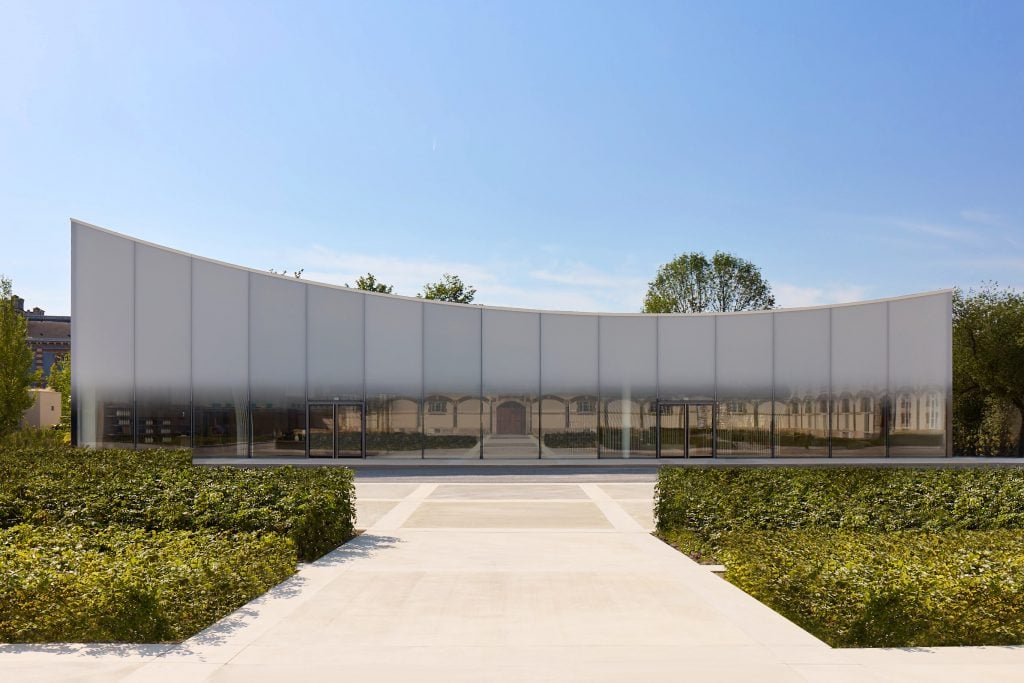
Maison Ruinart will reopen its doors on October 4th, after three years of refurbishment at its historic location in Reims, northeastern France. The renovations are ushering in a new chapter for the world’s oldest champagne house. Luxury sparkling wine is certainly on the menu, but Ruinart are beckoning art and design lovers with stunning architecture, sumptuous interiors, ancient caves, and a sprawling art garden with 19 original art works.
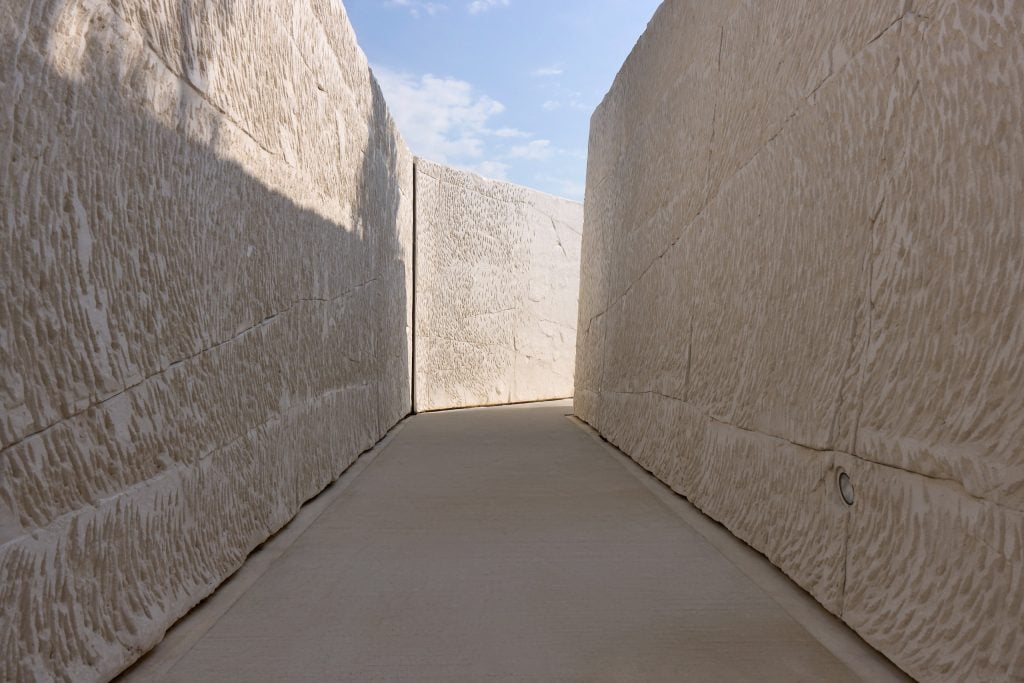
The Chemin des Crayères, the Path of Chalk. The passageway, enclosed by walls of etched chalk, is designed by landscape artist Christophe Gautrand. Courtesy of Maison Ruinart
The site’s defining feature is its extensive system of subterranean chalk caves. They were first excavated during the time of the Romans into the Middle Ages when the chalk was used for Reims’s city walls. Since 2015, the subterranean caves have been recognized as a UNESCO World Heritage Site. Upon entering the property, visitors walk through the Chemin des Crayères, the Path of Chalk, a passageway designed by landscape artist Christophe Gautrand. The pathway is enclosed by chalk walls, engraved with markings using tools used by ancient quarries, evoking the centuries of toil invested in the venue.
Inspired by the cave minerals, Bavarian artist NILS-UDO created La Pierre (The Rock), a massive stone nest hewn out of local limestone with a cavity carved out of it. Nestled within is a lone, smooth, marble nugget, like a prehistoric egg, preserved for eternity.
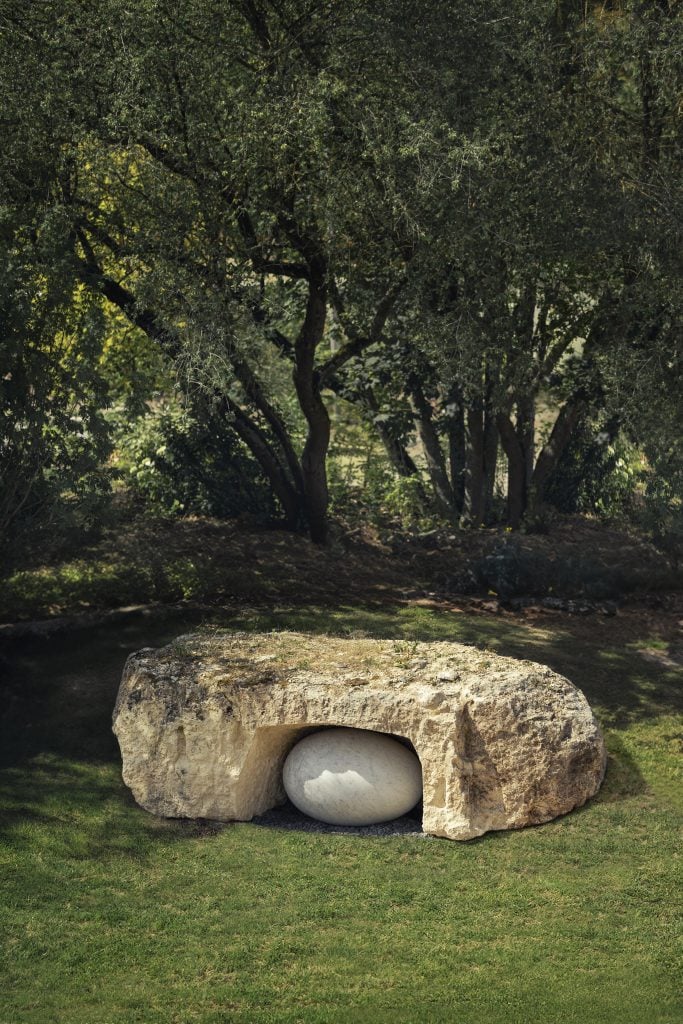
Another of the Maison’s spectacular features is its garden, also designed by Gautrand, where nature and art blend seamlessly. The garden spans over 75,000 square feet of grounds, including almost 55,000 square feet of woodlands. A diverse selection of species, including majestic beech trees, hornbeams, maples, and even cork oaks—the first in the Champagne region—creates a dynamic, evolving ecosystem. The main courtyard, designed as a garden-inspired living room, features curving hedges reminiscent of the rolling Champagne hills.
At Maison Ruinart, art is ubiquitous, as it has been since its inception. Artistic displays are spread across the venue including in the chalk pits and the landscaped grounds. Visitors can encounter 110 pieces from 36 artists as they explore the venue, with several works crafted using local materials from the vineyard and winemaking process.

German land artist Cornelia Konrads’ in-situ creation The Arch (2024)
A new sculpture garden features over 19 original works by renowned artists like Andrea Bowers, Eva Jospin, Pascale Martine Tayou, and Jeppe Hein. German land artist Cornelia Konrads stuns with her in-situ creation The Arch. The artist used old vine stock, preserved by the Maison, to create her monolith that looks like a forgotten gateway to another world, overtaken by the wild vines in an enchanted forest. Another notable installation is Thijs Biersteker’s Xylemia, which highlights the intelligence of living beings by using sensors to measure the sap flow in trees, translating it into visual signals in real time. This interactive work is a reflection of the Maison’s use of similar technology in studying the life cycles of its grape vines.
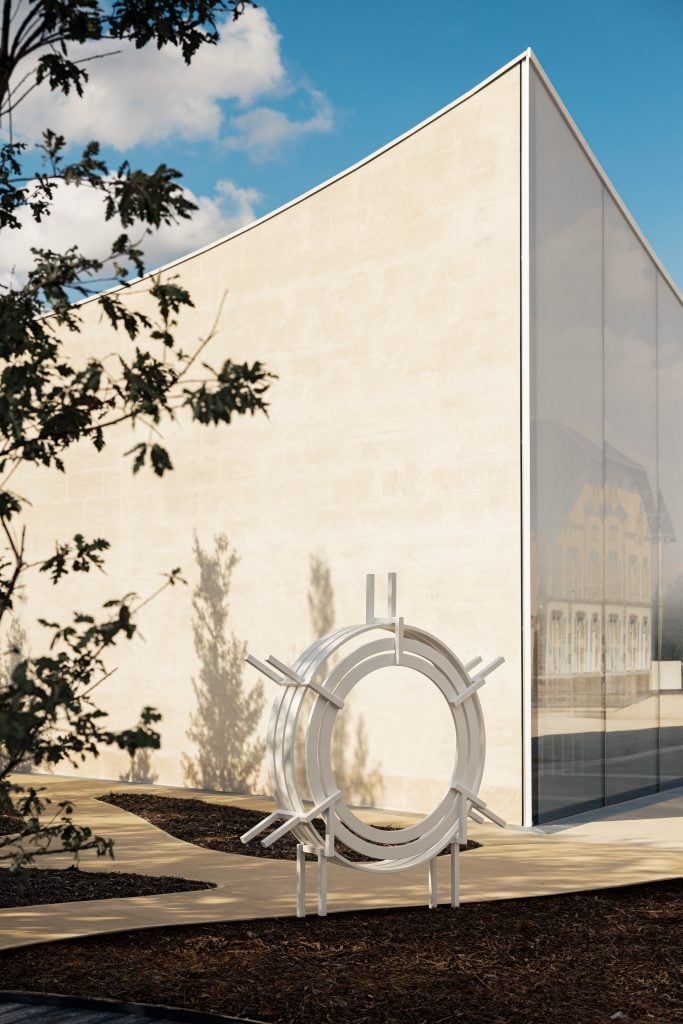
The white sculpture in the shape of a ship’s helm is Modified Social Benches (2024) by Danish artist Jeppe Hein. Situated just outside the newly renovated Nicolas Ruinart Pavilion, the functional sculpture serves as a resting spot for visitors. Courtesy of Maison Ruinart
The Chemin des Crayères leads to the newly renovated Nicolas Ruinart Pavilion. Designed by the renowned Japanese architect Sou Fujimoto, the pavilion seamlessly merges the 19th-century architecture of surrounding buildings with its modern structure. The structure’s design reflects the iconic curve of a Ruinart champagne bottle in an abstract form, with the building’s asymmetrical roof echoing the roundness of champagne bubbles. Its glass façade offers views of both the historic courtyard and the sculpture garden surrounding it. “Through the pavilion’s bay window, facing the main courtyard, you see Maison Ruinart as if in a dream,” said Fujimoto in a statement.
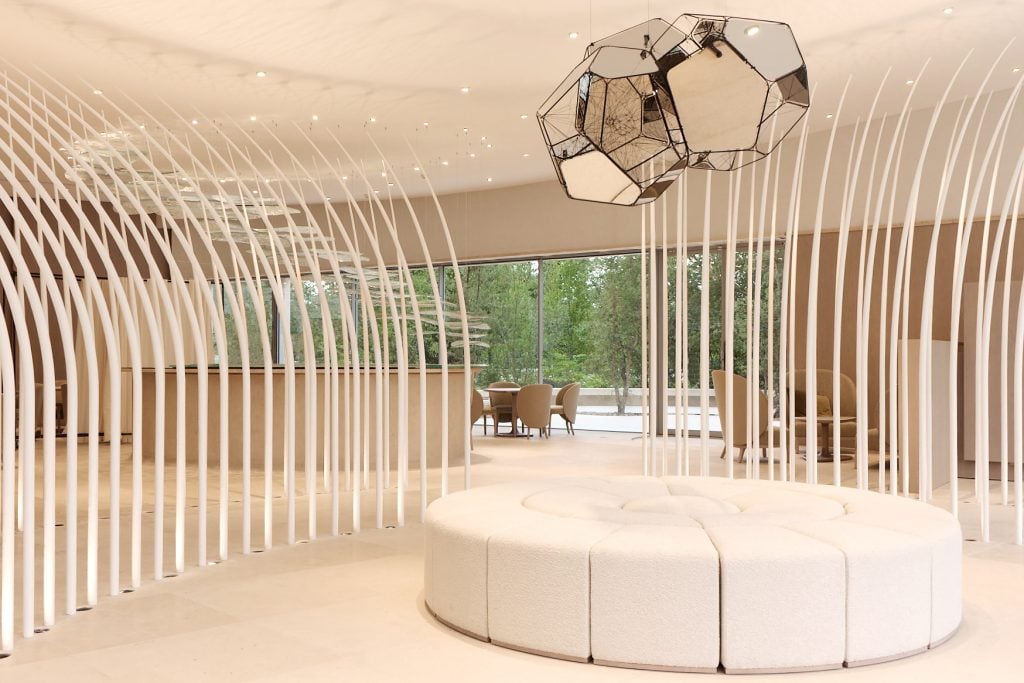
Interior designer Gwenaël Nicolas renovated Nicolas Ruinart Pavilion’s interiors. Courtesy of Maison Ruinart
Interior designer Gwenaël Nicolas renovated the pavillion’s interiors. Upon entering the building, tall white fronds form a path guiding visitors through a space inspired by the surrounding landscape. Delicate details enchant the eye, from levitating glass bubbles above a stone bar to white islands of plush furniture. A mirrored ceiling infinitely reflects the pavillion’s walls, while bottles of Ruinart Blanc de Blancs, set in LED-lit walls, await thirsty guests like juicy fruit ripe for plucking. Visitors can explore exclusive wine experiences, including a secret cellar reserved for connoisseurs seeking to savor rare vintages. So, come for the champagne, and stay for the art at Ruinart’s exquisite showground.
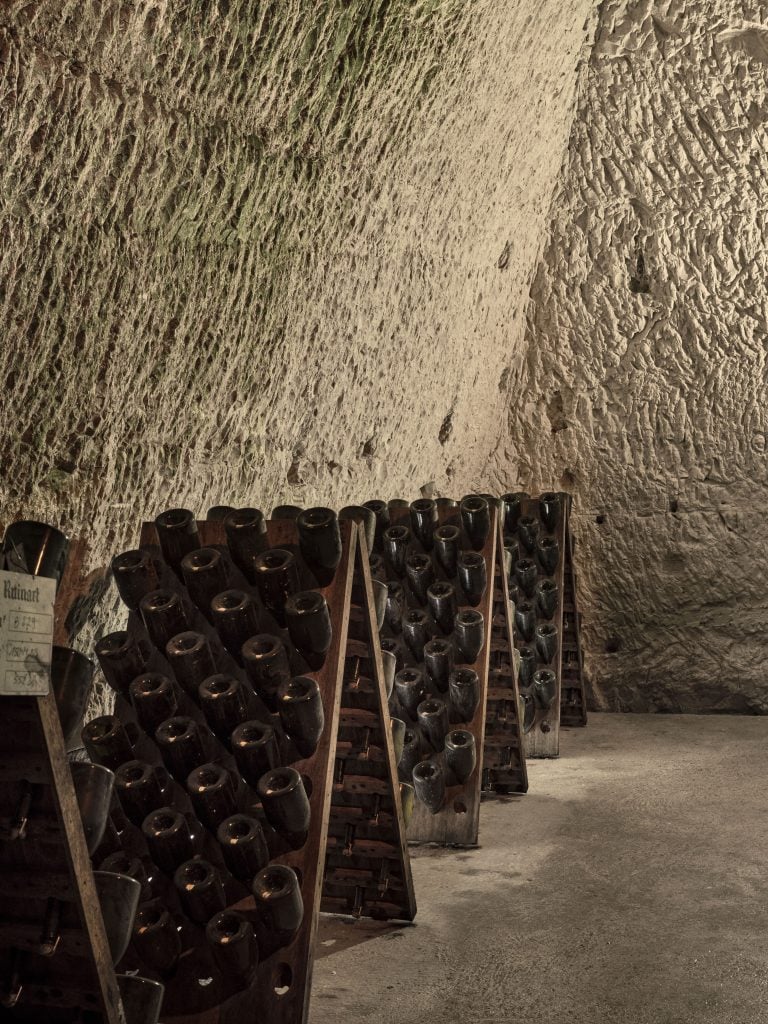
The subterranean chalk caves under Maison Ruinart function as naturally refrigerated champagne cellars. Courtesy of Maison Ruinart





